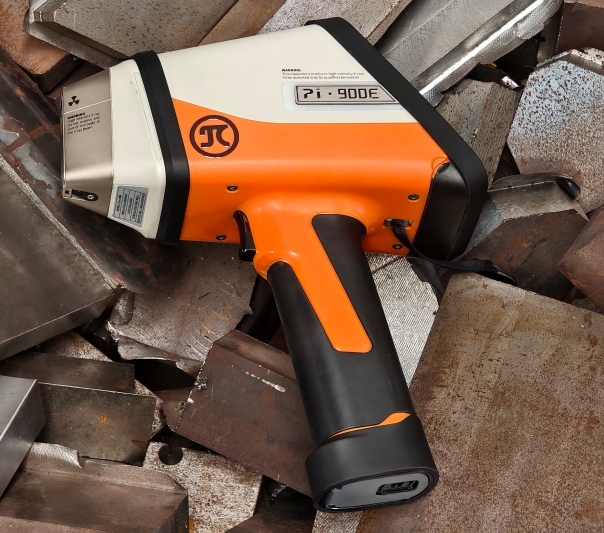
Alloy
A high-tech enterprise focusing on the development and application of X-ray technology products, committed to becoming a leading supplier of X-ray industrial testing solutions.
The Ultimate Guide to XRF Metal Analyzers: Features, Benefits, and Applications
X-ray fluorescence (XRF) analyzers have become invaluable tools in a wide range of industries, offering precise, non-destructive analysis of metals, alloys, and other materials. Whether you're working in manufacturing, environmental testing, or quality control, an XRF metal analyzer is essential for ensuring accuracy and efficiency. In this guide, we’ll dive into the features, benefits, and applications of XRF metal analyzers, helping you understand why they’re indispensable in today’s technological landscape.
What is XRF?
XRF, or X-ray fluorescence, is a powerful analytical technique used to determine the elemental composition of materials. When a sample is exposed to high-energy X-rays, it emits fluorescent (secondary) X-rays. These emitted X-rays are then measured by the analyzer, which identifies the elements present in the material and their concentrations.
XRF is widely used because it’s non-destructive, requires minimal sample preparation, and provides real-time results.

Key Features of XRF Metal Analyzers
Non-Destructive Testing
One of the primary features of XRF metal analyzers is their ability to analyze materials without altering or damaging the sample. This makes them ideal for testing high-value materials or for situations where preserving the sample is essential.
Portable and Easy to Use
Modern handheld XRF analyzers are portable, making them easy to use in the field or in manufacturing settings. These analyzers are equipped with intuitive interfaces and can often provide results within seconds, saving time and improving workflow efficiency.
Fast and Accurate Results
XRF metal analyzers are known for delivering quick, accurate results. This is crucial for industries like manufacturing and quality control, where speed and precision are critical to maintain production timelines and meet quality standards.
Wide Elemental Range
XRF analyzers can detect a broad range of elements, from light elements like magnesium and aluminum to heavier elements such as lead, zinc, and copper. Some advanced models can even detect elements as heavy as uranium.
Quantitative and Qualitative Analysis
XRF analyzers offer both qualitative and quantitative analysis. They can identify which elements are present in the sample and determine their concentration levels, making them versatile tools for various applications.
Minimal Sample Preparation
Unlike some other analytical techniques, XRF requires very little sample preparation. In many cases, a simple clean surface is all that's needed to begin analysis, which further speeds up the process and reduces costs.
Benefits of XRF Metal Analyzers
Cost-Effective
XRF metal analyzers can save businesses money in the long run. By providing fast, reliable, and non-destructive testing, they reduce the need for costly and time-consuming lab tests. Additionally, many XRF devices are low-maintenance and have a long lifespan, further reducing operational costs.
Portability for On-Site Testing
With portable handheld XRF devices, field testing is made easier, eliminating the need to transport materials to a lab for analysis. This capability is invaluable in industries like mining, construction, and scrap metal recycling.
Compliance with Industry Standards
XRF metal analyzers help businesses stay compliant with environmental and safety regulations. By offering precise material analysis, these devices ensure that products meet the required standards, whether they involve alloy compositions, hazardous materials, or metal recycling guidelines.
Real-Time Data
Immediate access to data is a significant advantage of using XRF analyzers. Real-time results allow for quicker decision-making, which is crucial in fast-paced industries where product quality or material composition must be continuously monitored.
Environmental and Safety Benefits
XRF metal analyzers reduce the need for chemical reagents and minimize sample destruction, making them an environmentally friendly choice. Additionally, because they don’t require extensive safety protocols (such as in destructive testing), XRF analyzers offer safer working conditions.
Applications of XRF Metal Analyzers
Quality Control in Manufacturing
XRF analyzers are widely used in quality control to verify the composition of materials before they are used in production. This ensures that the materials meet the specifications required for creating high-quality products, particularly in industries like automotive and aerospace.
Scrap Metal Recycling
In the recycling industry, XRF analyzers are invaluable for identifying the types of metals in scrap materials. This enables recyclers to sort materials efficiently, ensuring that valuable metals like gold, copper, and aluminum are extracted and reused appropriately.
Mining and Geology
XRF analyzers are frequently used in the mining industry for mineral exploration and ore testing. These analyzers provide rapid, on-site elemental analysis of rock samples, helping geologists make informed decisions about where to mine and which resources are most valuable.

Terras PI900E Handheld Alloy Analyzer
Environmental Analysis
XRF is also used for environmental testing, such as analyzing soil, water, and air samples for contamination. By detecting hazardous elements like lead, arsenic, and mercury, XRF analyzers play a critical role in environmental protection and public health.
Forensic and Archaeological Investigations
XRF analyzers are used in forensic science and archaeology to analyze artifacts and other materials. This non-destructive method allows experts to determine the material composition of historical objects, which can help identify their origin or assess their condition without damaging them.
XRF spectrometers-Pi 900E deliver fast, precise elemental analysis without damaging samples. By detecting characteristic fluorescent X-rays, they identify alloys, metals, and contaminants in seconds—ideal for quality control, scrap sorting, and environmental testing. Portable models feature rugged designs, intuitive touchscreens, and Wi-Fi for seamless data transfer. With multi-element detection (Mg to U) and customizable calibrations, XRF balances lab-grade accuracy with field-ready versatility.
Conclusion
XRF metal analyzers are powerful, versatile tools that have transformed the way industries perform metal analysis. Whether you're working in manufacturing, environmental testing, recycling, or geology, XRF analyzers offer fast, accurate, and non-destructive testing that helps optimize processes, improve quality, and ensure safety compliance.
With features like portability, minimal sample preparation, and a wide range of detectable elements, these analyzers are not just a luxury; they’re a necessity for any industry that deals with metals. By investing in an XRF metal analyzer, you’re not only enhancing your operational efficiency but also ensuring that your products and processes meet the highest standards.
Join Us
Subscribe to our email list for updates & promotions.



